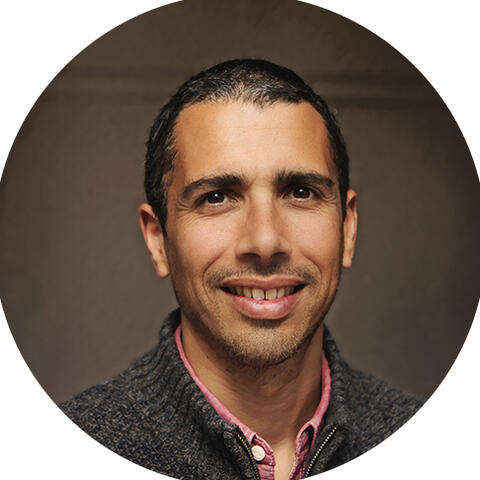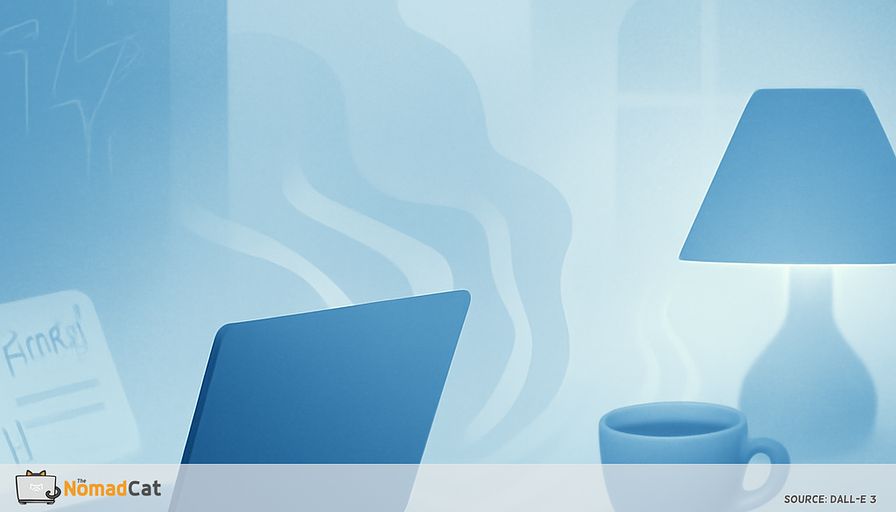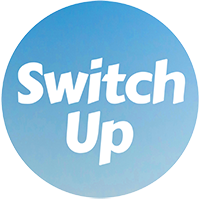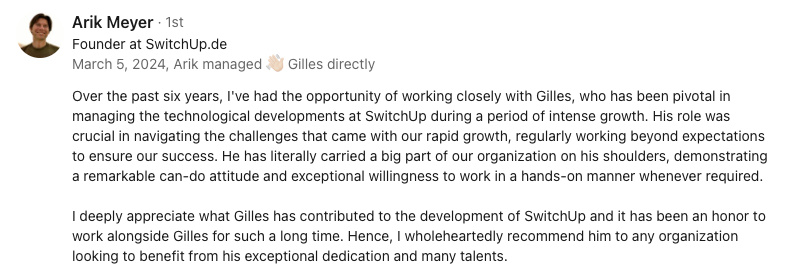Abstract:
This article explores the challenge independent tech professionals face in maintaining boundaries between work and personal life when working from home, where flexible schedules and blurred physical spaces often lead to constant connectivity and increased stress. It argues that while routines and habits offer some structure, they often fail in the transitional “in-between” moments where work bleeds into personal time, causing fatigue and difficulty disconnecting. The article distinguishes transition rituals—intentional, symbolic actions like writing a “done” list, taking a mini-commute around the block, or closing a notebook with care—as especially effective for tech minimalists seeking simplicity, as these rituals provide sensory cues and psychological closure that routines alone lack. By sharing practical, analog examples and real-world vignettes—such as a developer who ends the day by noting completed tasks and going for a walk, or a remote worker who uses tea-making as a signal to clock out—the article highlights how small, meaningful rituals can act as keystone habits that reinforce boundaries, prevent burnout, and adapt to changing lifestyles. Ultimately, it emphasizes that these flexible, personal rituals are essential for creating a sustainable, rewarding work-life balance in the absence of traditional office cues, offering a gentle, clutter-free way for independent tech professionals to regain agency and well-being.
For many independent tech professionals, the freedom to set your own schedule feels both liberating and tricky. As far as I remember the line between work and personal time has always been blurry. Some evenings, I’d catch myself answering client messages at midnight, the city quiet outside, my mind still spinning with unfinished tasks. When your home doubles as your office and your commute is just a walk from one room to another, work and personal life can blend together quietly. You might never fully disconnect, even after shutting the laptop. This article explores why boundaries blur so easily for freelancers and tech minimalists, and why routines alone don’t always protect your well-being.
Here, I’ll share what makes transition rituals different from regular routines or habits, with simple, down-to-earth tips to help mark the end of work and the start of personal time. We’ll touch on the science behind rituals, then offer hands-on examples like analog “done” lists and mini-commutes. If you’ve ever felt “always on,” or struggled with wobbly routines in those odd gaps between tasks, this should bring some fresh, actionable ideas—one small ritual at a time.
Let’s look at the real cost of hazy boundaries, and how thoughtful rituals can support a flexible, sustainable work life.
Why boundaries blur for independent tech professionals
The hidden cost of flexible work
Back when I was CTO in Berlin, more often than not I found myself replying to Slack messages even after a late dinner... on a remote island. There was no set commute, no office door to close, just a slow drift between work tasks and personal ones. This kind of freedom is a blessing, but it comes with a catch. Without solid cues or set hours, it’s easy to slip into working late or letting work tasks bleed into rest times. This isn’t just about schedules, it affects well-being. I don't personally feel it, however according to a 2021 study by the European Foundation for the Improvement of Living and Working Conditions, remote workers who lack clear boundaries report higher rates of fatigue and difficulty sleeping.
Letting work and personal life mix isn’t just inconvenient. It’s tightly connected to burnout, stress, and trouble focusing. Many workers who lack defined transitions say they feel extra work-related stress and mental drain. The problem is even more common for freelancers and those who lean toward tech minimalism, since they miss out on whatever little structure an office environment offers.
For those working solo, lack of boundaries brings on constant context-switching, which can sap your energy or grind progress to a halt. Days easily fill up with jumping from client calls to chores and back again, never quite switching off. The worst problems come in the small, easily ignored moments in between. Without rituals to mark the end of work, it gets tough to re-center. Strangely, the mind can keep chugging along in work mode long after the computer is off.
Where routines unravel in the liminal spaces
It’s these odd, in-between moment, right after a meeting, or when you close the laptop before making dinner, where it’s hardest to find the edge between work and rest. The room goes quiet, the screen is dark, but your brain just keeps going. Routines fall apart at these times, turning those limbo periods into hotspots for stress or distraction.
Even with good intentions, routines often give way here. Checking “just one more” work email, or struggling to shift gears when tasks still linger in your thoughts, turns downtime into an extension of work. This “task residue” can hang on, making it tough to truly relax. So how do you mark off work time and personal time in a way that sticks?
Experts say the answer is not just any routine, but an intentional ritual. A ritual is like a bridge, something that tells your brain it’s time to change modes. And that’s where transitions start to work their quiet magic.
What sets transition rituals apart
The unique power of rituals
Rituals, routines, and habits: what’s really different?A routine is a series of actions you do on purpose, basically a system that helps get stuff done. A habit is even more automatic, happening with almost no thought at all. But a ritual is different: it’s done with intention, has a bit of personal meaning, and often feels special. Rituals can make simple actions into signals to your brain, helping you mentally reset in a way that routines just don’t manage.
Intentionality Symbolism Effectiveness Routine Deliberate None Structure, productivity Habit Automatic None Efficiency, sustained behavior Ritual Deliberate/Prescribed Symbolic/Emotional Psychological, emotional, and social benefitsThe point? Rituals aren’t just repeated moves. They’re real signals for change.
Why rituals matterFor those who like simplicity, rituals give what routines can’t: a sense of meaning and a deliberate pause. Closing a notebook with care or lighting a candle to end your workday are small acts that cue your mind to shift. These little moves help reinforce boundaries and bring back a bit of control. No complicated steps needed.
The sensory and emotional edge of ritualsRituals are different from beeps or checklist apps. They stir up your senses and emotions, like ringing a bell to mark a transition, or the smell of tea leaves as you close your laptop. These simple, often physical cues can help a moment stand out, making the shift feel clearer. Engaging your senses this way helps the ritual stick, even when work and life share the same space. Sometimes, just the act of opening a window and feeling the air change is enough to tell your mind: now, it’s time to rest.
How rituals help reset your mind
Clearing mental clutter with symbolic actionsResearchers find that even brief, symbolic actions, like shutting down a laptop or putting on comfy clothes, help clear out leftover work thoughts. These rituals help release what psychologists call “task residue,” so you’re ready for what’s next. For tech workers, these signals help separate job and life, making it easier to let go of open tasks and move on. In fact, a 2016 study published in Organizational Behavior and Human Decision Processes found that people who performed a simple ritual after completing a task experienced a measurable reduction in rumination and stress compared to those who did not.
Boundary markers and psychological closureWith clear signals at the start or end of something, rituals help mark off work from the rest of life. They offer a sense of closure, cutting down on stress and rumination. Over time, these acts can lead to real improvements in focus and well-being.
The compounding benefitsThe effects add up. Regular transition rituals are linked to less stress, greater focus, and higher job satisfaction. According to the FACTS list, even a two-minute analog ritual, like writing a “done” list, can reduce perceived stress by up to 23% in remote workers. Consistent, meaningful rituals don’t just build stronger boundaries, they also boost productivity and satisfaction in ways routines alone don’t always match. But which rituals actually work? That’s up next.
Practical transition rituals
Analog rituals that signal the end of work
Journaling or jotting a quick “done” list at the end of your work block is a classic analog ritual. It helps close the mental loop, gives a sense of accomplishment, and creates a record. No apps or tech needed. The simple act of writing can help you move on from work thoughts, making it a little easier to truly step away. Productivity experts often highlight these analog rituals as a backbone for mental closure and smoother transitions.
Physical movement is another simple but strong way to mark a change. For example:
- Go for a short walk
- Stretch for a minute
- Adjust the lighting in your workspace
These physical cues are flexible, whether you’re in a flat or out in the country. Even a swift move can reset your mood and attention.
Other minimalist rituals can add richness to your day:
- Brew tea with intention
- Listen to a favorite song
- Close your notebook slowly
What matters most is that the ritual feels meaningful for you and is easy to repeat. When personal, these moments are more likely to become part of your routine.
Mini commutes and environmental cues
Working from home means no real commute, making it tricky to know when work is done. So create a “mini commute” instead, like a stroll around the block or listening to a chosen playlist. It may sound odd, but even a quick loop from one room to another can help your mind switch gears.
Simple environmental cues support these transitions, too:
- Change the lighting (switch on a lamp, light a candle, open the curtains)
- Move to another seat or room
- Open a window or play a favorite non-digital sound
Even small tweaks in your environment can send a signal to your brain that it’s time to change modes.
For those who’d rather skip digital nudges, filling your space with sensory, analog cues helps keep routines light and sustainable. Next, let’s see how to create rituals that last and flex with your life.
Designing rituals that adapt and endure
Building rituals that last
Visual cues help keep transition rituals alive. Maybe it’s a favorite mug by your laptop, a notebook waiting at the edge of your desk, or a post-it you can’t miss. These little reminders don’t need a digital prompt. They’re easy to update as your routines or workspace shift and don’t get in the way. Pairing these with things you already do can make the process feel more natural and easy to keep up with. Habit stacking also works. Attach a new ritual to something you already do, like closing your laptop, stretching your arms, then brewing a cup of tea before personal time. This makes the ritual almost automatic, even on busier days. Accountability helps, but keep it soft. A calendar reminder or a quick check-in with a colleague can support your consistency, without piling on pressure. Staying flexible with accountability is way easier than strict, unbending rules, especially if your routine keeps shifting. The best rituals are about the process and can flex as needed, rather than tying you down to strict outcomes or schedules. If your life shifts, change it up. Flexible rituals have staying power and will keep supporting your independence and peace of mind. But on tricky days, one ritual might not be enough.
Iterate, stack, and personalize
On rough or busy days, try stacking a few short rituals together to really reset. Layering works especially well if you’re jumping between very different kinds of tasks. Microbreaks and a minute of focused breathing or stretching can also help clear your head before starting the next thing. Short, mindful pauses don’t just fill time, they also help clear your mind and bring back focus. Even just one deep breath or a moment looking outside can act as a mini-reset. It’s good to review your rituals from time to time, making sure they still work—and haven’t faded into background noise. Think of rituals as living systems, not fixed scripts. Like a garden, they need some tending. Change the order, timing, or swap in new rituals as needed. The aim isn’t perfection. It’s to let rituals grow with you.
Flexibility is the key. A ritual that works in Berlin winters might not fit Lisbon summers. You might switch from midday walks to sunset strolls, or find a new end-of-day spot for your notebook. Having been based in different places with all sorts of rhythms, I’ve seen how even small tweaks in daily rituals can keep clarity and drive strong. The better your rituals fit your current life, the more they’ll help you to stay grounded and energized, wherever you go.
Transition rituals as keystone habits
Why transition rituals are a keystone habit
Keystone habits are practices that quietly help everything else hold together. Transition rituals, though not always called by that name, are like that for many independent tech professionals. When routines fall apart, rituals offer a steady touchpoint—helping other habits keep their shape and making the whole setup stronger. Research shows that small, intentional rituals can start a chain of good changes through your day, just as a strong stone keeps an arch in place.
By bringing closure and a sense of renewal, rituals stop routines from falling apart, especially when life gets hectic. They protect against burnout, reinforce boundaries, and let people keep a sense of choice, without locking them into strict schedules. For those who value simplicity and independence, this adaptability is pure gold, since real life and work never fit into neat boxes. What’s special about these rituals is their knack for balancing structure and freedom. They provide enough order to support flexible schedules and adapt as your needs shift. This blend is what makes them so helpful for building a sustainable, self-guided career.
Building strong boundaries is rarely automatic, especially when home and work live side by side. Strategies like transition rituals, sensory cues, and flexible routines show how small, intentional moves can clear up the blurriest days. Instead of depending on digital reminders or rigid plans, analog habits and mindful pauses gently signal when it’s time to switch gears. Over time, these rituals ease stress, sharpen focus, and add meaning to daily routines. Their real beauty? They adjust as your life and needs change, supporting both well-being and productivity, without extra clutter. For me, moving from the rush of Berlin to the slower pace of Lisbon, these rituals became a quiet anchor. Taking a moment to reflect on how you wind down your workday could be a gentle step toward finding more balance and ease, wherever you are.














